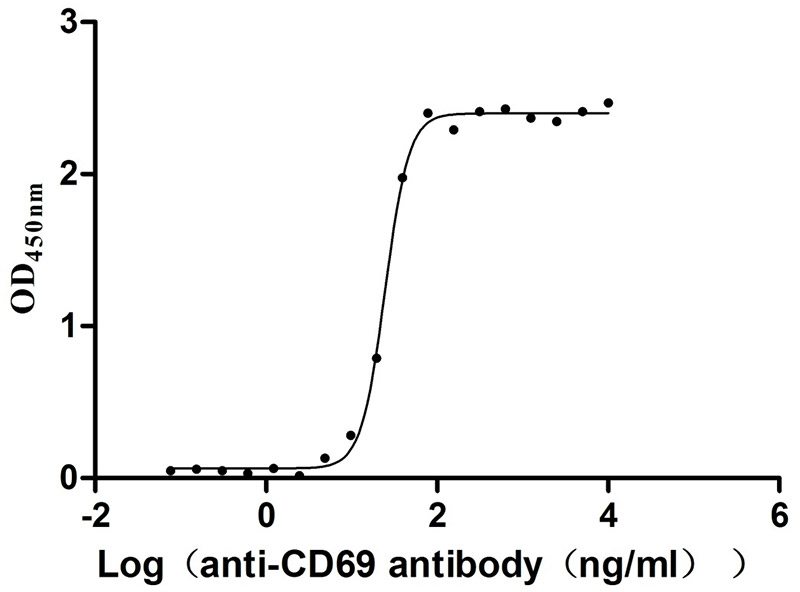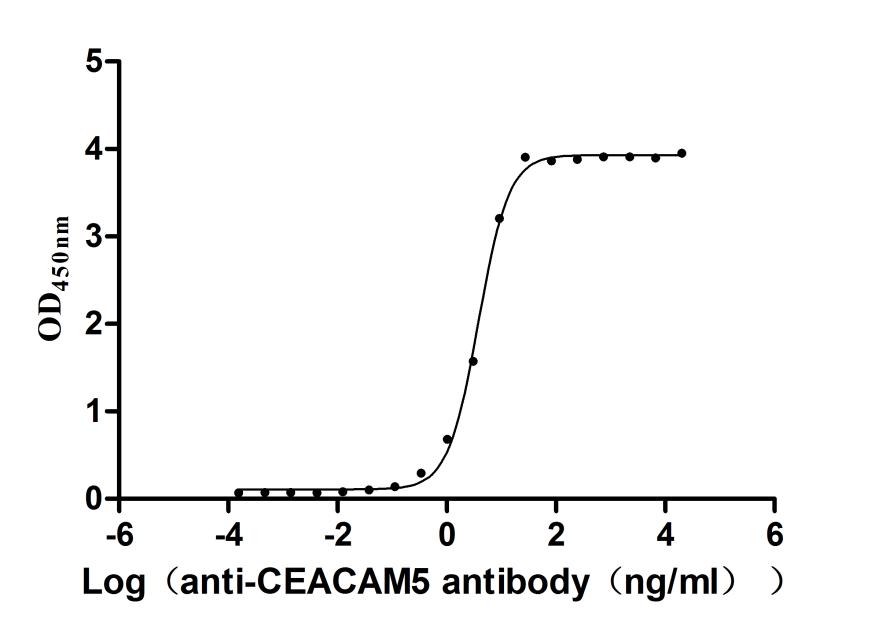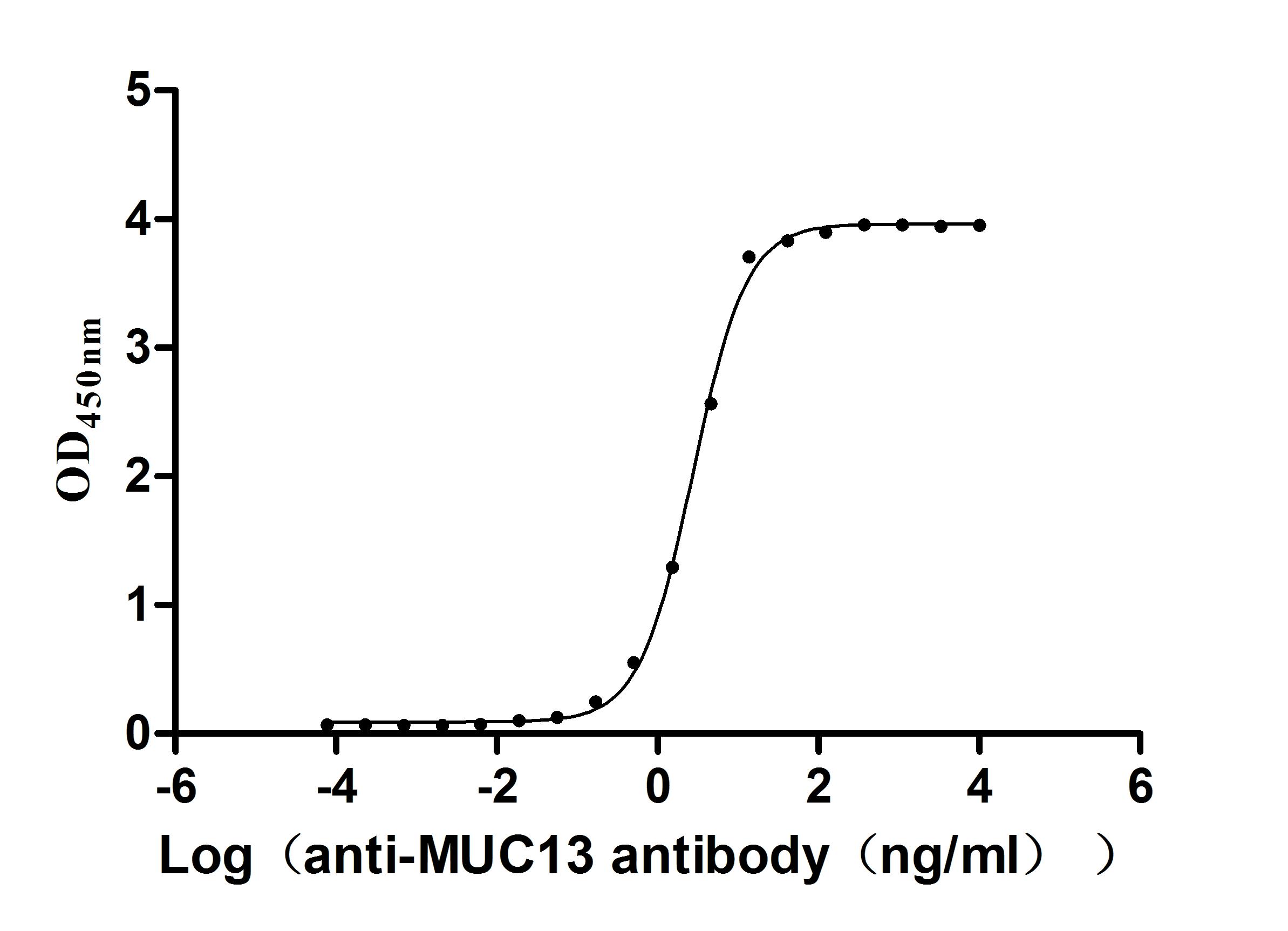Recombinant Mouse Tenascin-R (Tnr), partial
-
中文名稱:小鼠Tnr重組蛋白
-
貨號(hào):CSB-YP803962MO
-
規(guī)格:
-
來(lái)源:Yeast
-
其他:
-
中文名稱:小鼠Tnr重組蛋白
-
貨號(hào):CSB-EP803962MO
-
規(guī)格:
-
來(lái)源:E.coli
-
其他:
-
中文名稱:小鼠Tnr重組蛋白
-
貨號(hào):CSB-EP803962MO-B
-
規(guī)格:
-
來(lái)源:E.coli
-
共軛:Avi-tag Biotinylated
E. coli biotin ligase (BirA) is highly specific in covalently attaching biotin to the 15 amino acid AviTag peptide. This recombinant protein was biotinylated in vivo by AviTag-BirA technology, which method is BriA catalyzes amide linkage between the biotin and the specific lysine of the AviTag.
-
其他:
-
中文名稱:小鼠Tnr重組蛋白
-
貨號(hào):CSB-BP803962MO
-
規(guī)格:
-
來(lái)源:Baculovirus
-
其他:
-
中文名稱:小鼠Tnr重組蛋白
-
貨號(hào):CSB-MP803962MO
-
規(guī)格:
-
來(lái)源:Mammalian cell
-
其他:
產(chǎn)品詳情
-
純度:>85% (SDS-PAGE)
-
基因名:Tnr
-
Uniprot No.:
-
別名:Tnr; Tenascin-R; TN-R; Janusin; Neural recognition molecule J1-160/180; Restrictin
-
種屬:Mus musculus (Mouse)
-
蛋白長(zhǎng)度:Partial
-
蛋白標(biāo)簽:Tag?type?will?be?determined?during?the?manufacturing?process.
The tag type will be determined during production process. If you have specified tag type, please tell us and we will develop the specified tag preferentially. -
產(chǎn)品提供形式:Lyophilized powder
Note: We will preferentially ship the format that we have in stock, however, if you have any special requirement for the format, please remark your requirement when placing the order, we will prepare according to your demand. -
復(fù)溶:We recommend that this vial be briefly centrifuged prior to opening to bring the contents to the bottom. Please reconstitute protein in deionized sterile water to a concentration of 0.1-1.0 mg/mL.We recommend to add 5-50% of glycerol (final concentration) and aliquot for long-term storage at -20℃/-80℃. Our default final concentration of glycerol is 50%. Customers could use it as reference.
-
儲(chǔ)存條件:Store at -20°C/-80°C upon receipt, aliquoting is necessary for mutiple use. Avoid repeated freeze-thaw cycles.
-
保質(zhì)期:The shelf life is related to many factors, storage state, buffer ingredients, storage temperature and the stability of the protein itself.
Generally, the shelf life of liquid form is 6 months at -20°C/-80°C. The shelf life of lyophilized form is 12 months at -20°C/-80°C. -
貨期:Delivery time may differ from different purchasing way or location, please kindly consult your local distributors for specific delivery time.Note: All of our proteins are default shipped with normal blue ice packs, if you request to ship with dry ice, please communicate with us in advance and extra fees will be charged.
-
注意事項(xiàng):Repeated freezing and thawing is not recommended. Store working aliquots at 4°C for up to one week.
-
Datasheet :Please contact us to get it.
靶點(diǎn)詳情
-
功能:Neural extracellular matrix (ECM) protein involved in interactions with different cells and matrix components. Theses interactions can influence cellular behavior by either evoking a stable adhesion and differentiation, or repulsion and inhibition of neurite growth. Binding to cell surface gangliosides inhibits RGD-dependent integrin-mediated cell adhesion and results in an inhibition of PTK2/FAK1 (FAK) phosphorylation and cell detachment. Binding to membrane surface sulfatides results in a oligodendrocyte adhesion and differentiation. Interaction with CNTN1 induces a repulsion of neurons and an inhibition of neurite outgrowth. Interacts with SCN2B may play a crucial role in clustering and regulation of activity of sodium channels at nodes of Ranvier. TNR-linked chondroitin sulfate glycosaminoglycans are involved in the interaction with FN1 and mediates inhibition of cell adhesion and neurite outgrowth. The highly regulated addition of sulfated carbohydrate structure may modulate the adhesive properties of TNR over the course of development and during synapse maintenance.
-
基因功能參考文獻(xiàn):
- Tenascin-R promotes assembly of the extracellular matrix of perineuronal nets via clustering of aggrecan. PMID: 25225104
- Aggrecan, link protein and TN-R were identified to be essential for the neuroprotective properties of the perineuronal net. PMID: 24625978
- These findings indicate the importance of TNR in the regulation of hippocampal neurogenesis and suggest that TNR acts through distinct direct and indirect mechanisms during development and in the adult. PMID: 24338367
- Our results indicate that TNR modulates adult but not developmental neurogenesis in the olfactory bulb PMID: 23785146
- This study provided evidence that the tenascin-R modulates synaptogenesis and long-term synapse stability. The mutant neurons display reduced frequencies of mEPSCs and mIPSCs. PMID: 23637166
- Ablation of TNR modifies the extracellular matrix and leads to reorganization of the dentate gyrus with enhanced GABAergic innervation and altered plasticity, promoting working memory and reversal learning. PMID: 20194688
- TN-R appears to play an important role in the regulation of the number and architecture of perisomatic inhibitory synapses onto hippocampal pyramidal cells. PMID: 12532406
- the impact of TN-R deficiency on the living animal PMID: 12882316
- murine tenascin-R gene structure and functional characterisation of the promoter PMID: 12927810
- TN-R deficient mice displayed decreased motivation to explore and an increased anxiety profile in the free choice open field (FCOF), open field (OF) and elevated plus maze (EPM) tests. PMID: 14529817
- Tenascin R is expressed and glycosylated in neurons PMID: 14681222
- TN-R-deficient mutants show several electrophysiological and morphological hallmarks of increased neuronal excitability, which do not give rise to more accelerated or severe epileptogenesis in pilocarpine model of epilepsy. PMID: 15026125
- Examination of electroencephalograms and auditory-evoked potentials in freely moving tenascin-R-deficient and wild-type control mice indicate that TN-R is involved in the regulation of certain inhibitory mechanisms in the intact brain. PMID: 15033179
- This study conclude that in TN-R-/- mice which show morphological, electrophysiological and behavioural abnormalities, the ECS is reduced and its geometry altered. PMID: 16262627
- Our results suggest that TNR restricts functional recovery by limiting posttraumatic remodeling of synapses around motoneuronal cell bodies where TNR is normally expressed in perineuronal nets. PMID: 16870730
- Tenascin-R promotes neuronal differentiation of embryonic stem cells and recruitment of host-derived neural precursor cells after excitotoxic lesion of the mouse striatum PMID: 18499893
- Beta 1 integrin-mediated effects of tenascin-R domains EGFL and FN6-8 on neural stem/progenitor cell proliferation and differentiation in vitro PMID: 18658130
- Tenascin-R (TNR) promotes formation of a hyperexcitable network during kindling and this suggests that an increase in S100-expressing astrocytes may contribute to retarded epileptogenesis in TNR-/- mice. PMID: 19178559
顯示更多
收起更多
-
亞細(xì)胞定位:Secreted, extracellular space, extracellular matrix.
-
蛋白家族:Tenascin family
-
組織特異性:Brain-specific.
-
數(shù)據(jù)庫(kù)鏈接:
Most popular with customers
-
Recombinant Human Tumor necrosis factor ligand superfamily member 13B (TNFSF13B), partial (Active)
Express system: Mammalian cell
Species: Homo sapiens (Human)
-
Recombinant Human T-cell surface protein tactile (CD96), partial (Active)
Express system: Mammalian cell
Species: Homo sapiens (Human)
-
Recombinant Human Early activation antigen CD69 (CD69), partial (Active)
Express system: Mammalian cell
Species: Homo sapiens (Human)
-
Express system: Mammalian cell
Species: Macaca mulatta (Rhesus macaque)
-
Recombinant Human Mucin-13(MUC13),partial (Active)
Express system: yeast
Species: Homo sapiens (Human)



-AC1.jpg)













